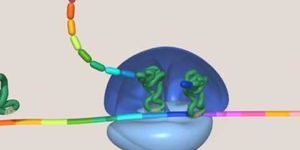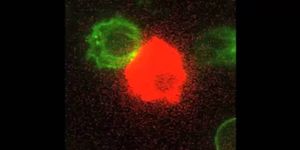
Researchers using a new method that handily lengthens human telomeres have found that treated cells act like young (untreated) cells, proliferating freely in the lab dish.
The method entails using modified messenger RNA. It should enable researchers to produce vast numbers of cells for study and could lead to new options for treating diseases spurred by shortened telomeres, according to scientists from the Stanford University School of Medicine, Palo Alto, Calif.
Acting like the plastic caps clipped to the end of shoe laces to prevent fraying, telomeres are situated on the ends of the strands of DNA (chromosomes), which contain our genomes. Some 8,000 to 10,000 nucleotides long in young people, telomeres are curtailed as the cells divide, and when telomeres attain a critical length, the cell quits dividing (or dies).
"Now we have found a way to lengthen human telomeres by as much as 1,000 nucleotides, turning back the internal clock in these cells by the equivalent of many years of human life," says Helen Blau, PhD, professor of microbiology and immunology, Stanford University, and director of the university's Baxter Laboratory for Stem Cell Biology. "This greatly increases the number of cells available for studies such as drug testing or disease modeling." Blau is also a member of the Stanford Institute for Stem Cell Biology and Regenerative Medicine.
The scientists discovered that skin cells whose telomeres were made longer this way could divide up to 40 more times than untreated cells. The effect is short-lived-a plus-as treated cells do not continue to divide endlessly, which could make them hazardous to use as a promising therapy due to risk of cancer.
A paper discussing the research, titled "Transient delivery of modified mRNA encoding TERT rapidly extends telomeres in human cells," recently published in The FASEB Journal, is found here: bit.ly/15Qg4ez
This fruits of this research could play a role in slowing down effects of getting older. "This study is a first step toward the development of telomere extension to improve cell therapies and to possibly treat disorders of accelerated aging in humans," says John Cooke, MD, PhD, a co-author of the study. Cooke, formerly a professor of cardiovascular medicine at Stanford, is now chair of cardiovascular sciences at the Houston Methodist Research Institute.
Blau says the team aims to learn more about differences between cell types, and how they can be overcome so this technique can be more "universally useful."
Image: The 46 human chromosomes, shown in blue, with telomeres appearing as white pinpoints. [Image courtesy: Hesed M. Padilla-Nash and Thomas Ried, NCI]
 Researchers using a new method that handily lengthens human telomeres have found that treated cells act like young (untreated) cells, proliferating freely in the lab dish.
Researchers using a new method that handily lengthens human telomeres have found that treated cells act like young (untreated) cells, proliferating freely in the lab dish.








